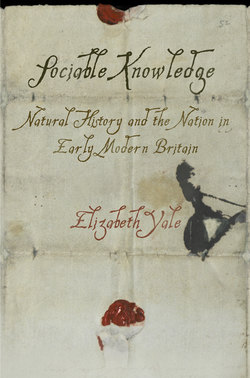Читать книгу Sociable Knowledge - Elizabeth Yale - Страница 8
ОглавлениеNote on Sources
All quotations from early modern papers observe the following conventions: Familiar abbreviations (“Dr.,” “Mr.,” and so on) have been left as is, while most abbreviations of names and words not now commonly abbreviated have been expanded in braces. Common abbreviations such as “wch,” “ye,” “yt,” however, have been silently expanded to “which,” “the,” and “that.” All superscripts have been lowered. Any text crossed out by an author, where legible, is shown with a line through it. Authorial insertions to the text are presented in angled brackets. Editorial comments and insertions are enclosed by braces (a practice necessitated by Aubrey’s use of square brackets). Where dates are conjectural (as in dating of correspondence), they are enclosed by braces. These practices largely follow the recommendations of Michael Hunter as described in “How to Edit a Seventeenth-Century Manuscript: Principles and Practice,” Seventeenth Century 10 (1995): 277–310; and Editing Early Modern Texts: An Introduction to Principles and Practice (Basingstoke: Palgrave Macmillan, 2007), with a few modifications to suit the complexities of the Aubrey manuscripts, particularly the Naturall Historie of Wiltshire (Bod MS 1 and Bod MS 2). Modifications for dealing with the Aubrey manuscripts are based in part on Kate Bennett’s editorial practices in “Materials Towards a Critical Edition of John Aubrey’s Brief Lives” (D.Phil. thesis, University of Oxford, 1993).
Dates prior to 1752, when Britain adopted the Gregorian calendar, are given in the “Old Style” (the old Julian calendar was eleven days behind the Gregorian calendar in the seventeenth century). The beginning of a new year is taken to be January 1, rather than March 25. When necessary for clarity, dates are given with the doubled year—for example, February 9, 1691/92.
